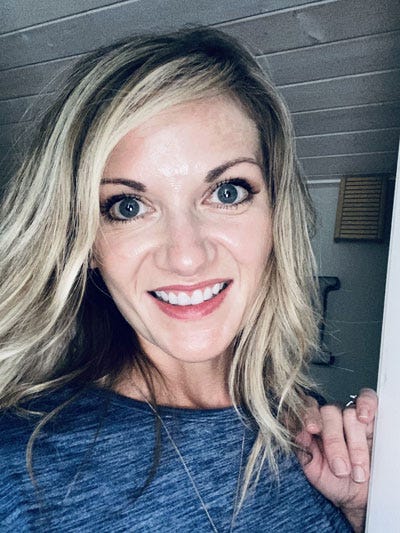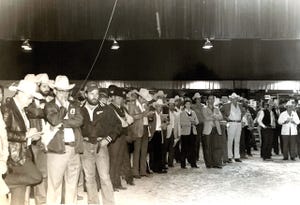Virtual fencing for beef cattle
Merck Animal Health accelerates sustainable beef production with Vence.

The ranch is a grass factory, and while physical fences last for generations, they lack the ability to be dynamic. Virtual fencing provides cattle producers with digital platforms to manage their herd from miles away. One product that offers this seamless solution is Vence.
What began as a private company, recently joined forces. This past fall, Merck Animal Health acquired Vence. Together their perspectives align to provide a more powerful product for cattle producers – increasing profitability and productivity while also providing better outcomes for animals.
This cutting-edge technology enhances rotational grazing, allowing ranchers to set and adjust boundary lines with the click of a button. The Vence app also provides real-time data on the herd, including animal health and GPS location to accelerate sustainable beef production.
Frank Wooten, founder of Vence, and Jeroen van de Ven, DVM and head of global marketing and commercial services at Merck Animal Health, talked with Farm Press to talk about Merck Animal Health’s acquisition of Vence and the technology’s potential to change the world of cattle management.
The idea behind the technology
Vence was born with a producer focused mentality, targeted at the efficient production of pasture raised beef. A few years back, the founders of Vence noticed the work that Merck Animal Health was doing to improve dairy outcomes for producers on a global basis.
Frank said, “They were looking at animal health, fertility, and tracking rumination patterns. At Vence, we were doing the same thing on a completely different level – in beef cattle. We wanted to see how we could incorporate the two technologies.”
A synergistic relationship developed between the companies, and Jeroen described the union of their shared interests.
He said, “Our mission at Merck Animal Health is the science of healthier animals. Our goal is to make sure animals are raised healthily and to create the best potential for producers. With Vence, we are accelerating the trend of technology adoption to include virtual fencing and rotational grazing to meet specific goals in animal protein production.”
Getting started with Vence
The Vence approach changes the way ranchers manage and control their cattle. Rather than relying on static fences that have been on a property since the homestead, virtual fencing provides a landowner with dynamic management strategies.
During the initial setup, a team from Vence works with the rancher to set the virtual fence lines and train the herd to avoid off-limit areas. According to the Vence website, training can take as little as four days, and typically, 85% of the herd learn from watching the lead cattle during training.
Lightweight collared devices are placed on the cattle. The battery powered collars are designed with sound cues to alert the animals to boundary lines.
The collars relay real-time data to base stations on the property through GPS, and the data is delivered directly to the rancher’s mobile device. The interface provides information on grazing patterns along with heat maps to indicate high pressure areas in the pasture or locations that are unevenly grazed.
Land stewardship benefits
From the app, landowners can review the grazing history and adjust the boundary lines as needed. This feature allows ranchers to capture the upside of a great, high producing grass season. They can put more animals out, rotate them, and track the process.
This also promotes opportunities for regenerative agriculture. Vence streamlines the process of rotational grazing, which contributes to soil health and protects the land from the drought-like conditions caused by overgrazing.
Rotational grazing is cost effective while also protecting the environment. The Vence website notes that ranchers can gain 30% cost savings by implementing a rotational grazing system. Healthier soils produce higher quality pastures, and that leads to sustainable, high-quality beef production.
Furthermore, virtual fencing gives ranchers an opportunity to factor weather volatility into their management strategy. When bad weather is on the way, ranchers can make plans to protect feedstock until they are ready to use it.
“Weatherwise, each year there seems to be another 100-year storm, flood, or freeze. Farmers need to be able to manage their land and react to the current conditions on the ground. In a static pasture, we can only manage animals in a particular sized area, and it forces farmers and ranchers in a box. The core of Vence allows for a more dynamic management system,” Frank said.
Cost and additional benefits
The dataset provided by Vence saves farmers time and money by allowing them to proactively detect issues in the herd and address them in real-time.
Implementing Vence requires the installation of base stations to serve as the communication network. The number of base stations depends on the signal coverage available on the land, and once the stations are installed the rancher pays an annual service fee.
The annual fee is on a per head basis, and Frank said the 2023 pricing is $40 per cow. Consumable batteries for the collars cost $10 each, and the battery life ranges from six months to two years, depending on the use and application of the product.
Vence boundary lines keep the cattle safe from entering any dangerous areas on the acreage. Boundaries can also protect other species on the land or in nearby waterways by keeping cattle out of protected areas.
Ranchers can check on the cattle during a thunderstorm or locate a new calf after birth. In addition, parameters can be set to monitor the well-being of the cattle and alert when an animal is sick or prone to chronic stress.
All of this work is done digitally. By managing the cattle through the Vence platform, ranchers are estimated to save up to 25% in labor costs.
Another cost savings comes from reduced physical fencing and the work required to check and run the fence lines. Ranchers save on the fuel, time, and energy to run ATVs, horses, and cattle dogs across the landscape.
While there is cost savings, the overall return on investment (ROI) is dynamic. Frank said a customer’s ROI can range anywhere from 200% to 500%. It all depends on the size of the acreage, topography of the land, and the infrastructure that is already in place. It also depends on the landowner’s objectives with the system.
Jeroen noted that Vence provides added value that goes beyond a customer’s ROI. This comes with the ability to verify sustainable management practices and document compliance to ever-increasing regulations.
More information on Vence
Currently, Vence is focused on large scale operations of pasture-raised beef with 500 head or more. Merck Animal Health looks forward to the future of Vence technology and expanding product options.
Frank said, “We think that precision livestock management is really where things will happen over the coming years, and Vence is a tool in the toolbox for ranchers to achieve that.”
For more details, visit the Vence website at Vence.io or Merck Animal Health at Merck-Animal-Health.com.
About the Author(s)
You May Also Like



.png?width=300&auto=webp&quality=80&disable=upscale)

